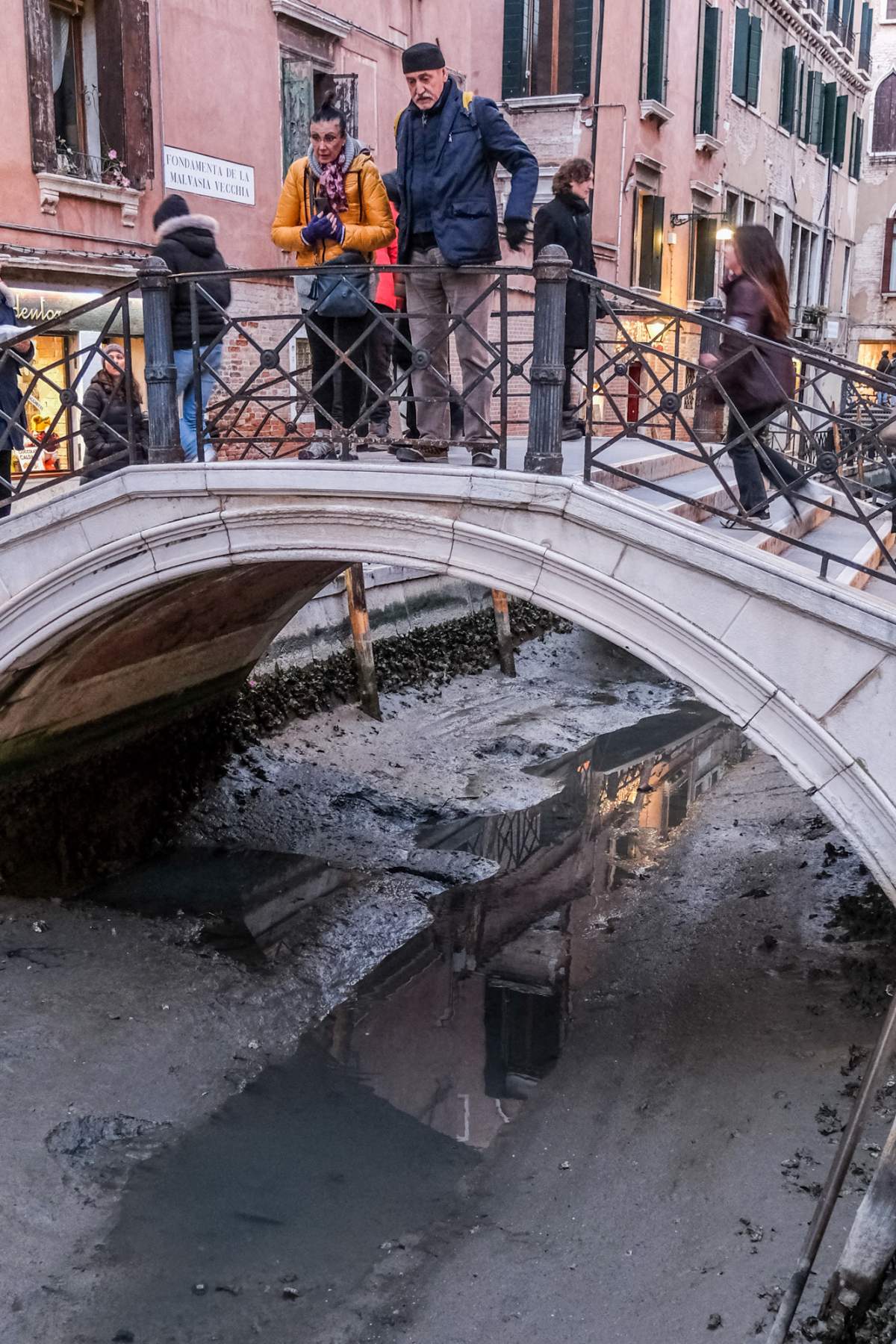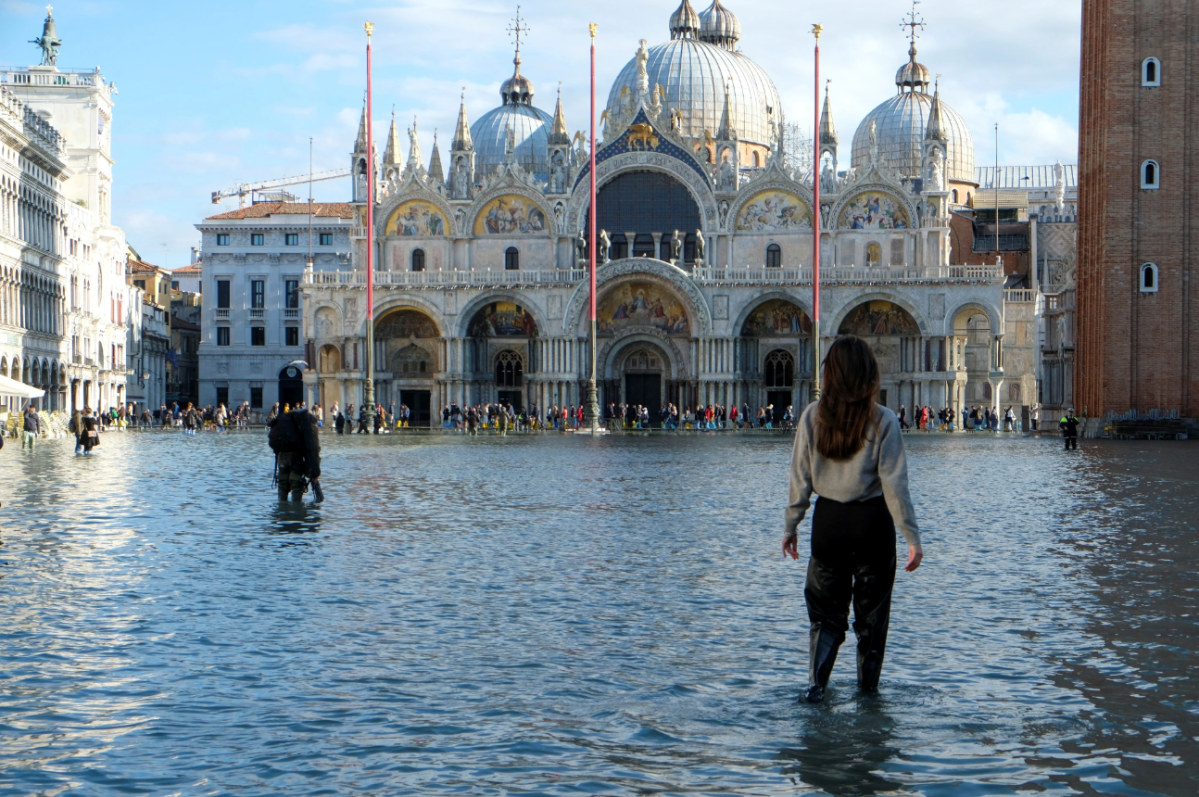Grounded gondolas and dry canals have sapped the romantic energy out of Venice, disappointing tourists in one of Italy‘s most visited cities.

Weeks of dry winter weather and no rain have turned Venice’s iconic waterways into muddy pits; the water levels in some canals are so low that gondolas and other water-based vehicles like taxis and ambulances cannot travel.
A series of images coming out of the Italian city on Friday showed barely-there streams of water pooling around dozens of boats alongside the uncovered foundation of several buildings.
Though flooding is normally a primary concern in the “floating city,” environmental experts have pointed to a lack of rain, a lingering high-pressure weather system and low tide as reasons for the emptied canals.

Get breaking National news
Venice is not the only area in Italy that is running dry. The environmental group Legambiente said Italian lakes and rivers are “in distress” as a result of a drought in the country. They claim that the Alps saw 53 per cent less snow than is typically average for the mountain range. Simultaneously, the Po, Italy’s longest river, saw a water deficit of 61 per cent this year.
Last July, Italy declared a state of emergency for areas surrounding the Po — which accounts for roughly a third of the country’s agricultural production — and suffered its worst drought for 70 years.
“We are in a water deficit situation that has been building up since the winter of 2020-2021,” climate expert Massimiliano Pasqui from Italian scientific research institute CNR was quoted as saying by daily Corriere della Sera. “We need to recover 500 millimetres in the north-western regions: we need 50 days of rain.”
The latest weather forecasts signal the arrival of much-needed precipitation and snow in the Alps in the coming days.
Venice, however, hasn’t always been dry. In 2019, Italy declared a state of emergency in the city after Venice was submerged in six feet of water, flooding homes and small businesses and damaging the city’s historic St. Mark’s Basilica.
City officials said the tide peaked at 187 centimetres, making it one of the highest floods in the city’s history, second only to 1966, when Venice saw a 194-centimetre deluge of water.

— With files from Reuters and Emerald Bensadoun
- Teen suspect claims no memory of stepsister’s cruise ship death, documents say
- Severe atmospheric river storm causes flooding, mudslides in Southern California
- Powerball player claims $1.817 billion lottery jackpot in Arkansas
- DOJ finds over a million potentially relevant Epstein files, delays release












Comments